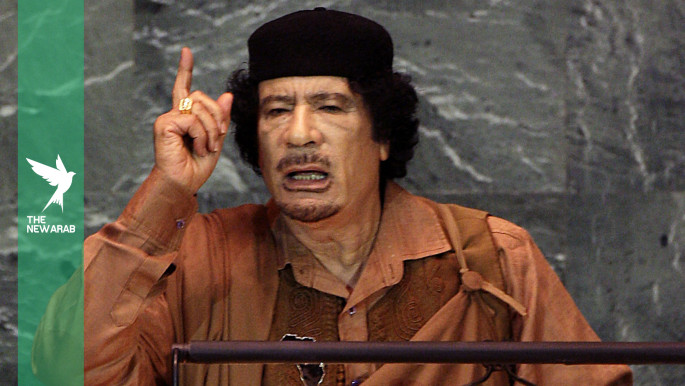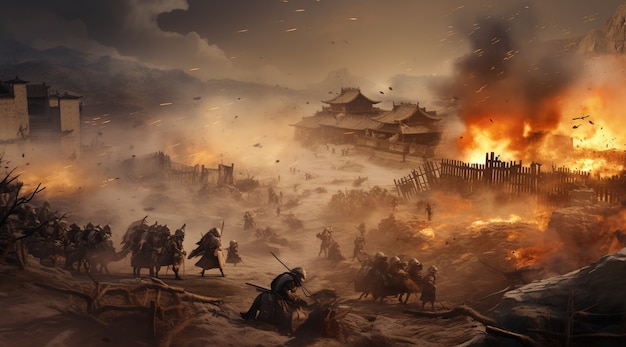In the early hours of September 1, 1969, a quiet yet seismic shift unfolded in Libya. A group of young military officers, led by a 27-year-old army captain named Muammar Gaddafi, orchestrated a bloodless coup against King Idris. Without firing a single bullet, they declared Libya a republic, ending decades of monarchy and colonial control. This marked the beginning of one of the most controversial, revolutionary, and turbulent regimes in modern Middle Eastern history.
From Bedouin Tent to Presidential Power
Gaddafi’s roots were far from royal. Born in 1942 in a Bedouin tent near Sirte, he was raised in poverty by a nomadic Arab family. His full name, Muammar Mohammed Abu Minyar al-Gaddafi, might have never made headlines if not for his unshakable dream of a liberated Libya, free from colonial chains. As a schoolboy, he was heavily influenced by Arab nationalism and anti-colonial ideologies—particularly those of Egypt’s revolutionary leader, Gamal Abdel Nasser.
During this time, Libya was still reeling from its colonial past under Italian rule and the Western-backed monarchy of King Idris. Gaddafi’s education, shaped by Egyptian teachers and revolutionary broadcasts, fueled his political consciousness. He absorbed Nasser’s writings, especially “Philosophy of the Revolution,” and became a devout follower of pan-Arabism, anti-imperialism, and socialism.
After being expelled from one school for political agitation, Gaddafi completed his secondary education in Misrata and went on to attend the University of Libya in Benghazi. However, his heart was in the military, and in 1963 he joined the Libyan army. In 1965, Gaddafi received advanced training in the UK, returning home determined to liberate his country from the grip of King Idris and Western influence.
The 1969 Coup and Birth of the Jamahiriya
On September 1, 1969, while King Idris was away in Turkey for medical treatment, Gaddafi and a small band of loyal officers seized control of the capital, Tripoli. The monarchy crumbled without resistance. The young captain swiftly announced the formation of the Libyan Arab Republic, promising a grassroots Islamic socialist revolution, fueled by pan-Arab unity and national sovereignty.
Shedding his military uniform, Gaddafi adopted traditional Arab robes and became a vocal critic of the West. His fiery speeches and flamboyant attire made him a striking figure on the world stage. But more than spectacle, he was determined to create an independent Libya that belonged to its people.
The Gaddafi Era: Revolutionary Dreams and Harsh Realities
For the next 42 years, Gaddafi ruled Libya with an iron grip. While Western media often portrayed him as a brutal dictator, many Libyans remember a very different legacy—one of sweeping reforms and national pride.
Under Gaddafi:
Libya became debt-free. The country owed no money to the IMF or World Bank.
Education and healthcare were free, and literacy rates soared to over 80%.
Every Libyan had access to housing. Newlyweds received free apartments or flats from the state.
Higher education was funded by the government. Libyan students received $2,500 monthly stipends to study abroad, along with housing and transportation support.
Unemployment benefits were guaranteed for every citizen.
Basic food items and petrol were heavily subsidized. A loaf of bread or a liter of fuel cost next to nothing.
Agricultural land and farming tools were distributed for free to citizens.
Electricity bills were minimal, and there was no load-shedding.
Foreign medical and education costs were covered entirely by the state if services weren’t available locally.
Despite these achievements, Gaddafi’s confrontational stance with the West earned him powerful enemies. He expelled Western companies, nationalized oil, and condemned colonialism at every global forum. His support for various revolutionary movements around the world only deepened his reputation as a thorn in the side of the West.
Bombings, Sanctions, and Political Isolation
In 1986, U.S. jets bombed Tripoli, reportedly in retaliation for Libyan-linked terrorism. Two years later, the Pan Am Flight 103 bombing over Lockerbie, Scotland, further isolated Libya. Economic sanctions and international pariah status followed.
However, by the late 1990s, Gaddafi sought reconciliation. He promised to cooperate in the fight against Islamic extremism and voluntarily dismantled Libya’s nuclear program. His country reopened its doors to foreign investment, and diplomatic relations with the U.S. and EU were restored. Ironically, just a few years before his death, Gaddafi had become a close ally of the same Western powers that once sought his downfall.
2011: The Arab Spring and the Violent End
The 2011 Arab Spring swept across the Middle East, bringing with it demands for democracy and regime change. In Libya, protests escalated into a brutal civil war. Gaddafi, known for refusing to step down, vowed to fight until his last breath. His once-loyal allies began to abandon him. Western nations, led by NATO, launched a bombing campaign under the pretext of protecting civilians.
On October 20, 2011, as Gaddafi attempted to flee his besieged hometown of Sirte, his convoy was bombed by NATO aircraft. He was captured alive by rebels—but what followed was horrific. Footage later emerged showing Gaddafi being beaten, humiliated, and ultimately killed in custody.
Though official reports claimed he died in crossfire, human rights organizations have since suggested that Gaddafi was brutally executed.
Legacy of a Lion or a Tyrant?
Was Muammar Gaddafi a ruthless dictator or a misunderstood reformer?
To many in the West, he was a volatile autocrat who enriched himself and crushed dissent. But to many Libyans, he was the architect of their nation’s independence, their education, and their pride. Under his rule, Libya was stable, debt-free, and prosperous in ways unimaginable today.
In the end, Gaddafi’s greatest irony was this: after decades of fighting Western interference, it was Western powers who ultimately sealed his fate. The power vacuum left in his wake plunged Libya into chaos, with rival factions, foreign powers, and extremist groups turning the once-unified country into a battlefield.
Muammar Gaddafi’s life was a whirlwind of revolution, contradictions, and controversy. His story serves as a reminder that the path from hero to villain is often written not by facts, but by those who survive to tell the tale.
Stay Connected with Islamic Guidings
Muammar Gaddafi’s life was filled with powerful lessons—about leadership, justice, betrayal, and the rise and fall of power. At Islamic Guidings, we dive deeper into such real-life stories and uncover the truth often hidden behind headlines.🕋 Want to explore more historical truths, Islamic perspectives, and thought-provoking stories?👉 Stay with us at Islamic Guidings — your trusted source for knowledge, reflection, and truth.📌 Bookmark our website, share it with your friends, and don’t miss our upcoming articles on global history, Islamic heroes, political revolutions, and untold stories that matter.


